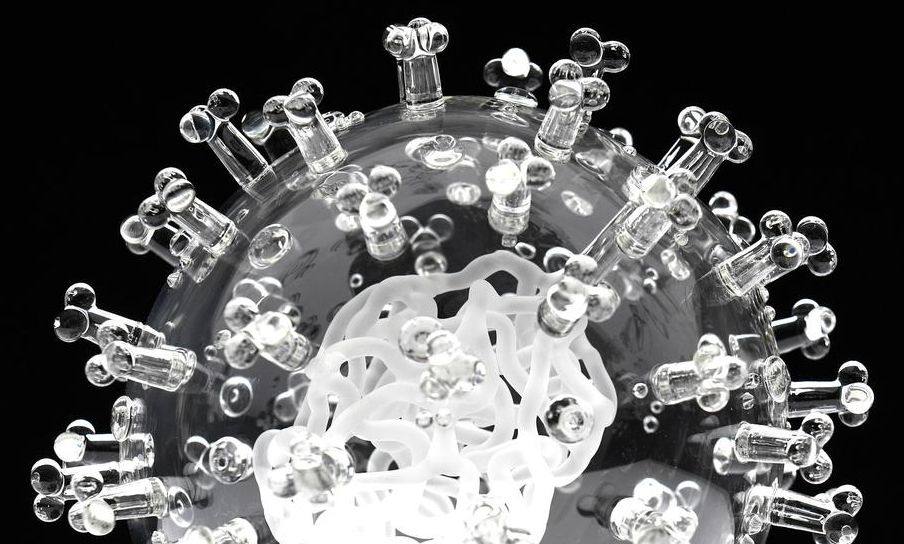:ooooo.
Phoronix is the leading technology website for Linux hardware reviews, open-source news, Linux benchmarks, open-source benchmarks, and computer hardware tests.


An advanced communications system comprising an emitter and an improved receiver (detector) utilizing modulated beams of neutrino and antineutrino waves as information carriers between the emitter and the receiver. of modulated neutrino and antineutrino beams in the emitter is achieved by a laser-like medium, while detection and demodulation of the neutrino and antineutrino beams is accomplished by a second laser-like medium which registers the flux (or of modulated neutrinos and antineutrinos passing there-through by means of resonant stimulated deexcitation of lasable excited states. In addition to the information transmission utilization, the neutrino emitter and receiver (detector) system may also be employed to gather information by the probing of internal earth structures. Such structures cause measurable refractions and retardations of the propagated pulses of monochromatic neutrino waves traveling through the earth between the emitter and receiver (detector), at certain predetermined neutrino


O.,.o.
Radiocarbon dating, invented in the late 1940s and improved ever since to provide more precise measurements, is the standard method for determining the dates of artifacts in archaeology and other disciplines.
“If it’s organic and old—up to 50,000 years—you date it by radiocarbon,” said Sturt Manning, the Goldwin Smith Professor of Classical Archaeology in the College of Arts and Sciences.
A new paper led by Cornell University points out the need for an important new refinement to the technique. The outcomes of his study, published March 18 in Science Advances, have relevance for understanding key dates in Mediterranean history and prehistory, including the tomb of Tutankhamen and a controversial but important volcanic eruption on the Greek island of Santorini.


An ancient Elpistostege fish fossil found in Miguasha, Canada has revealed new insights into how the human hand evolved from fish fins.
An international team of palaeontologists from Flinders University in Australia and Universite du Quebec a Rimouski in Canada have revealed the fish specimen, as described in the journal Nature, has yielded the missing evolutionary link in the fish to tetrapod transition, as fish began to foray in habitats such as shallow water and land during the Late Devonian period millions of years ago.
This complete 1.57 metre long fish shows the complete arm (pectoral fin) skeleton for the first time in any elpistostegalian fish. Using high energy CT-scans, the skeleton of the pectoral fin revealed the presence of a humerus (arm), radius and ulna (forearm), rows of carpus (wrist) and phalanges organized in digits (fingers).

A theory of how #AI & #brain recognize things. https://bit.ly/2Qnq3RC “In this article, we proposed a hypothesis that we call Switch Hypothesis for explaining how an ANN as well as a real neural network carry out its functions…” #MachineLearning #DeepLearning #NeuralNetworks
Neuroscience and psychology today has advanced significantly. With the use of neuroimaging methods such as functional magnetic resonance imaging (fMRI) and electroencephalography (EEG), human beings have gradually revealed the secrets behind how our brains perceive, recognize and memorize things. However, if you’d like to have a detailed, neuronal-level elucidation on how brains realize its functions, you should be very disappointed because no one is currently capable of doing so. In other words, although our cerebrums are no longer a pitch-black box, it’s still at least a “gray” box, with a lot of enigmas yet to be explained.

As the number of global coronavirus cases surpassed 200,000 as of Wednesday, a Japanese flu drug undergoing clinical trials in China as a possible treatment for coronavirus has effectively helped patients recover, Chinese officials told reporters. This is only one of many drugs that have shown promise.
A Chinese government official said patients who took Avigan tested negative for the virus in a shorter amount of time.

You’ve probably seen some of the cool things magnets can do. Place one near a paper clip, and the clip zooms across the table toward the magnet. Hold one magnet near another, and the second one mysteriously darts in the opposite direction. If you didn’t know about science, magnet tricks might seem like magic tricks.
Now, scientists have discovered another magnetic trick. By mixing unbelievably small magnets with oil, bigger magnets can be used to move the oily globs around. The trick isn’t just cool to watch. Some day, the technique could help clean up messy oil spills in the sea mistakenly dumped by ships.
Researchers at Carnegie Mellon University in Pittsburgh make teeny tiny magnets out of two metals: iron and cobalt. Unlike the palm-sized magnets you may have played with in school, these magnets are measured in nanometers. One nanometer equals one-billionth of a meter. That may be hard to picture, so think of this: A human hair is about 80,000 nanometers wide.(Read this story to learn more.)

I think these can be fought with current technology such as quantum radar even other higher level technology. It can also be hacked with quantum radar or neutrino beams.
Know colloquially as the “Black Holes” by the U.S. Navy, the Improved-Kilo-class of submarines are quite deadly — and could turn the balance of power in the South China Sea in China’s favor.